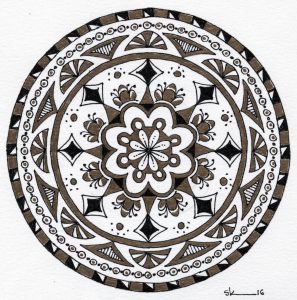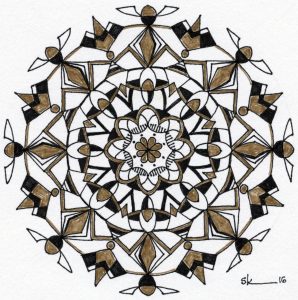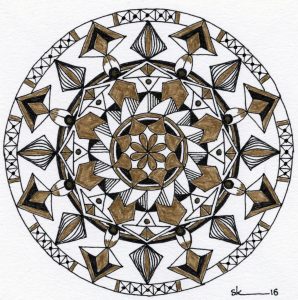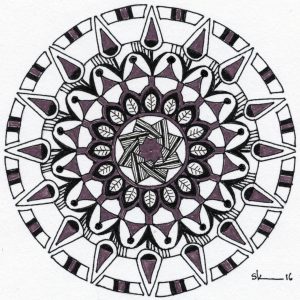Mandalas: A Creative Way to Meditate
Posted on June 1, 2016, by Lillian Moskeland CoL
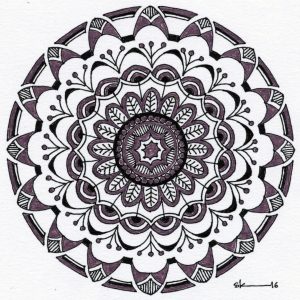
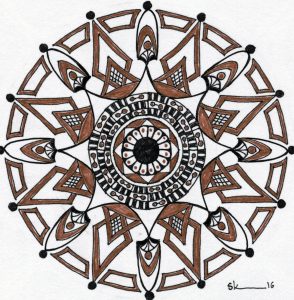

Photo by Jean M. Schildz
Sharon Kassing doesn’t set out to draw a specific mandala. Instead the mandala (pronounced mən-də-lə) draws itself, coming to her line by line. Beginning about 18 months ago, Sharon wanted to take an art class so she went to Artmart in St. Louis for a Zentangle course. She enjoyed this form of “intentional doodling” until she ran out of ideas. In a search for inspiration, she saw a book on mandalas, a circular art form based on repeated patterns. Patterns always have held a fascination for Sharon, especially those revealed in nature. The repetition of simple patterns from which a more complex pattern emerges is even of more interest to her, she said. Since that‘s what mandalas are, she was immediately drawn to them. Six months ago she began drawing and already has given away more than 200 patterns.
A mandala is an ancient form of art. Each mandala built or created is a unique “circular visual representation that is used as a focus point for the practice of meditation. It can often appear in dreams without your realizing what it represents and it is only when drawn afterward that it is recognized as a mandala,” according to science-all.com/mandala.
Sharon explained, “Mandalas unfold line by line. … It is a quieting, meditating work that draws itself.” Yet to build a mandala, she said, “You have to train your eye to measure on its own.” For Sharon this creation is a blend of science and art. She used pattern exercises for eye training for the children in her art classes and her work at the St. Louis Zoo. Patterns are everywhere in nature and are a critical component of camouflage for animals. Isolating some of these small examples and repeating them can create new and more complex examples that have a beauty all their own.
Every day there is time for creating her mandalas. Sharon admitted that once she has started, it is hard to interrupt a piece, so when she is scheduled to go out, she works on her art to the last possible minute. Although many of her mandalas are drawn in black on white, she likes the muted appeal as well, adding metallic, gold, silver, copper and mauve bronze.
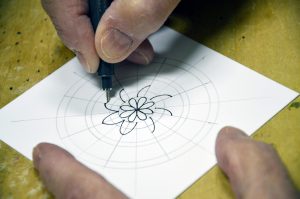
Photo by Jean M. Schildz
Sharon quit counting her mandalas once she had used the last of the 200 cellophane sleeves she had purchased to protect them. She continues to think about how her creations could be shared. One way could be to sell them and donate the money she made to Loretto Community. She has printed some note cards with the design on the front and a blank inside. On a recent visit to the Motherhouse, she gave away almost all those she had drawn since the first of the year.
“What I like about mandalas is that you can train yourself to draw them. You only need to trust the process, enter into it and be patient,” Sharon said. “It even works for people who say ‘I can’t draw.’”
Sharon sees her mandalas as an analogy for community, each line in sync. Just as community grows more deeply with time, intention and patience, so has her art. From a love of doodling as a way to actively listen, to Zentangle patterns, to inspirational mandalas, she has shared her mandalas as focal points for deeper meditation.
